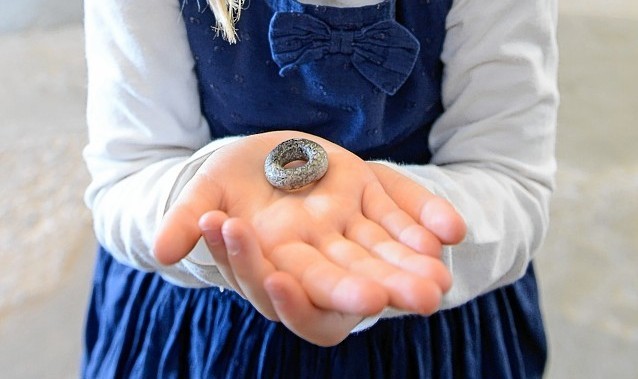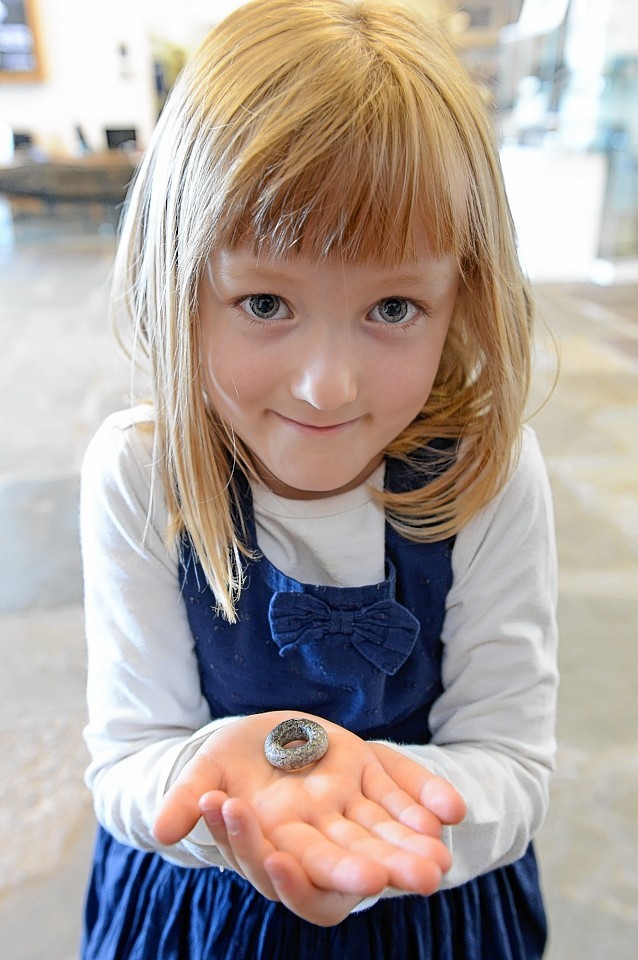A young schoolgirl girl made an astonishing find as she walked along a beach – a piece of prehistoric jewellery which could be up to 7,000 years old.
Eilith Gunn was delighted when she spotted the tiny ring-shaped piece of grey soapstone as she and her dad strolled near their home in Shetland.
Experts believe the find – about the size of a £1 coin – is probably a bead from an ancient necklace, dating back to the Iron or Stone Age.
Seven-year-old Eilith said: “I was really excited. They said it was a funny bead. It could fit around my index finger but it was quite small and sort of greyish-black.”
Her dad Dugie, 36, said: “We were just down wandering on the shingly beach.
“We both like collecting beach glass and it’s quite good for that.
“We walked back and forth looking for things and Eilith found this funny shaped stone beside the burn at the top of the beach. We put it on her finger and it fitted perfectly. We thought it was quite exciting.”
Mr Gunn, an air traffic controller, lives near the shore at Scarvataing, Muckle Rose, with his wife Linda, 34, an optician, and Eilith and her sister Vaila, 3.
His father, Simon, 69, who is interested in archaeology, thought the stone might be a spindle whorl – a disc fitted to the spindle to increase and maintain the speed of the spin.
The family gave the find pride of place in a silver quaich on a shelf in the sitting room, where it sat for 18 months before Mr Gunn took it to Shetland Museum and Archives.
He said: “At the museum they took it away. Fifteen minutes later the curator came down and said ‘Who found this? This is quite exciting’.
“He thought it was a bun-shaped bead, and he reckoned most likely 2,000 to 4,000 years old and possibly as old as 7,000. He reckons it was off a necklace and there could have been other beads.
“He said he’s never found anything as interesting and exciting as that.
“It’s amazing to think that someone was wearing that a very long time ago. It makes you imagine what life was like then.”
Museum curator Dr Ian Tait said: ‘In Shetland in ancient times, jewellery was not made from precious metal, it was made from local resources, and in the main stone. It might be evidence of a hitherto unknown site.”
The Gunns have donated the exciting find to the museum.

